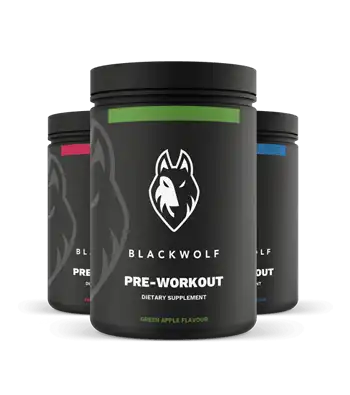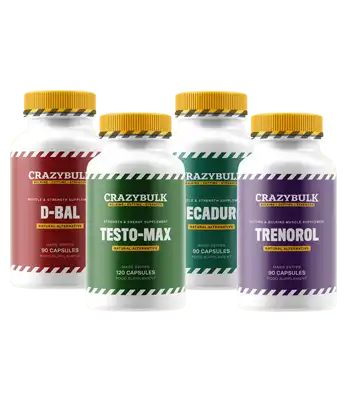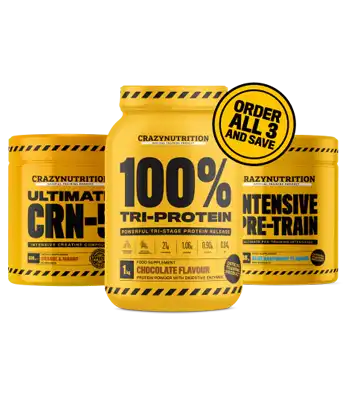This comprehensive guide will reveal the secrets to crafting the perfect chest and back workout routine. We’ll explore the most effective exercises for each muscle group, ensuring you target them strategically for the optimal growth and development.
Forget about unbalanced routines – here, we’ll create a program that builds a truly impressive upper body, one that not only looks great but also performs at its peak.
Whether you’re a complete beginner just starting your fitness journey or a seasoned athlete looking to refine your physique, we’ve got you covered. We’ll provide detailed explanations for each exercise, along with modifications to accommodate different fitness levels.
Get ready to leave no muscle fiber untouched as you push your limits, improve your posture, and witness the incredible transformation that comes with a focused chest and back routine.
Anatomy Of A Muscle: Understanding Your Chest and Back Muscles
Before we dive into the sculpting exercises, let’s take a quick detour to understand the magnificent machinery beneath your skin. Your chest and back are comprised of numerous muscles, each with a unique role to play.
The chest muscles, like the pectoralis major, are responsible for pushing movements and maintaining proper posture. On the flip side, your back muscles, such as the latissimus dorsi and trapezius, are powerhouses for pulling motions and keeping your spine aligned.
By understanding the function and location of these key muscle groups, we can design a targeted workout program that optimizes their growth and development, leading to a sculpted upper body that’s both aesthetically pleasing and functionally strong.
 Our fitness expert demonstrates how to do Incline Dumbbell Bench Press
Our fitness expert demonstrates how to do Incline Dumbbell Bench PressChest Muscles:
The chest is comprised of two main muscle groups:
- Pectoralis Major
- Pectoralis Minor.
The pectoralis major is the large, fan-shaped muscle [1] that makes up most of the muscular chest. It assists in movements that bring the arms across the body as well as arm raising and rotation.
The pectoralis minor is a smaller triangular muscle[2] that lies underneath the pectoralis major. It aids in respiratory functions and stabilizes the scapula.
Back Muscles:
Some of the main back muscles targeted in this workout are:
- Latissimus Dorsi
- Trapezius
- Rhomboids.
The lats are the large, powerful wing-shaped muscles that span the mid and lower back[3], enabling pulling and rowing motions.
The trapezius are the diamond-shaped muscles extending from the neck and shoulders [4]to the mid-back, assisting with shoulder elevation and rotation.
The rhomboids are smaller muscles between the spine and scapulae[5] that aid in retracting and stabilizing the shoulder blades.
The Ultimate List of Essential Chest Workouts
The chest is a prominent muscle group, and a well-developed one can significantly enhance your upper body physique. Here’s a breakdown of the essential chest workouts, designed to target different portions of the pectorals for a comprehensive and sculpted look:
1. Barbell Bench Press
The Barbell Bench Press stands as the foundational pillar for chest development, rightly crowned as the king of chest workouts.
How To: Barbell Bench Press (Video Credit: ScottHermanFitness YouTube Channel)
How to Do It:
- Lie flat on a bench, gripping the barbell slightly wider than shoulder-width apart. Execute a balanced motion that stretches and contracts the chest muscles thoroughly.
- Focus on a controlled descent and an explosive upward thrust. This compound lift not only amplifies muscle growth but reinforces joint stability and functional strength.
- Incorporating it into your routine promises progressive challenges and measurable gains in muscle size and power.
Sets and Reps: 3-4 sets of 8-12 repetitions
Pro-tip: “This classic exercise is a staple for chest development. My tip is to focus on a full range of motion—lowering the bar slowly to the chest and pressing up powerfully while maintaining a slight arch in the lower back. This technique ensures maximum engagement of the chest muscles.” says, Victoria Petrella, NASM-certified personal trainer
2. Incline Dumbbell Press
The Incline Dumbbell Press is an invaluable exercise that precisely targets the often elusive upper pectoral muscles.
Equipment Required: This exercise requires a flat bench and a barbell with appropriate weight plates. Ensure you have a spotter or safety bar if lifting heavy weights.
How To: Dumbbell Incline Press | 3 GOLDEN RULES (MADE BETTER!) (Video Credit: ScottHermanFitness YouTube Channel)
How to Do It:
- Set the bench at a 30-45 degree incline, offering a unique angle that, when performed with dumbbells, ensures an enhanced range of motion compared to its barbell counterpart.
- This exercise, pivotal for achieving the much-desired clavicular head development, adds depth and dimension to the chest’s upper region.
- Each repetition, characterized by a fluid arc and a focused contraction at the peak, not only carves out the upper pecs but also engages the deltoids and triceps, supporting a balanced and proportionate upper body sculpture.
Sets and Reps: 3-4 sets of 10-15 repetitions
Pro-tip: To target the upper chest, the incline dumbbell press is a key. “I recommend setting the bench at a 30 to 45-degree angle,” says Victotria. It is important to bring the dumbbells down to a level that forms a 90-degree angle at the elbows to avoid shoulder strain.
3. Decline Dumbbell Flyes
The Decline Dumbbell Flyes present a strategic exercise aimed at isolating and emphasizing the lower pectorals.
Equipment Required: You’ll need a pair of dumbbells with appropriate weight to perform the the best chest exercise with dumbbells
Decline Dumbbell Flyes – Workout Videos (Chest Workout) (Video Credit: Workout Videos YouTube Channel)
How to Do It:
- Performed on a decline bench, this workout extends the muscles’ stretching phase, allowing for a deeper engagement of the lower chest fibers.
- The key to its efficacy lies in the controlled widening of the arms and the deliberate arc motion, maximizing the stretch and contraction of the pectoral muscles without overburdening the shoulder joints.
- This articulation, besides augmenting muscle hypertrophy, fine-tunes the chest’s overall shape, ensuring a balanced and visually appealing curvature that enhances the lower chest.
Sets and Reps: 3-4 sets of 12-15 repetitions
Pro-tip: For lower chest development, decline flyes are incredibly effective. Ensure the movement is slow and controlled, with a focus on feeling the stretch in the chest at the bottom of the exercise and “squeezing the muscles as you bring the weights together at the top” says, Victoria Petrella.
4. Cable Crossover
The Cable Crossover is a dynamic exercise designed for sculpting and defining the chest with unparalleled precision.
Equipment Required: You will need a dumbbell for this exercise.
How To: Cable Crossover Fly (High-To-Low) || 3 GOLDEN RULES (Video Credit: ScottHermanFitness YouTube Channel)
How to Do It:
- By setting the machine at varying heights—chest level, high-to-low, or low-to-high—you can target the pectoral muscles from diverse angles, promoting an all-encompassing chest development.
- The consistent tension provided by the cables throughout the movement ensures the muscles are under constant work, ideal for muscle definition and endurance.
- This exercise, celebrated for its adaptability and effectiveness, stands as a testament to the ingenuity of resistance training[6] in crafting an aesthetically pleasing and functionally robust chest.
Sets and Reps: 3-4 sets of 12-15 repetitions
Pro-Tip: Vary the cable position (high to low or low to high) to target different portions of your chest. Maintain a slight arch in your lower back and keep your core engaged throughout the movement.
5. Push-Ups
Push-Ups, the quintessential bodyweight exercise, remain an integral component of chest training, prized for their simplicity, versatility, and efficacy.
Equipment Required: Dip bars or parallel bars- these are commonly found in gyms but can also be purchased for home use, and Bench (for bench dips) or gymnastic rings (for ring dips).
How To: Push-Up (Video Credit: ScottHermanFitness YouTube Channel)
How to Do It:
- Serving as a testament to the power of leveraging one’s body weight, push-ups engage the chest, shoulders, and core in a harmonious effort that builds strength, endurance, and stability.
- The adaptability of push-ups — from adjusting hand placement to elevating the feet — makes them a universally accessible exercise, catering to all fitness levels.
- Their inclusion in a chest workout regimen ensures a well-rounded approach, fostering functional fitness while laying the groundwork for advanced resistance training.
Sets and Reps: As many sets and repetitions as possible with good form. You can progress by elevating your feet or performing plyometric push-ups (explosive push-off at the top).
Pro-Tip: Keep your body in a straight line from head to toe throughout the movement. Engage your core and glutes to maintain proper form.
The Ultimate List of Essential Back Exercises
A strong, well-developed back is not just about aesthetics; it’s crucial for good posture, injury prevention, and overall athletic performance. Here’s a breakdown of essential best back workouts, targeting different muscle groups for a powerful and sculpted upper back:
Pull-Ups
Renowned as a comprehensive back workout, pull-ups particularly emphasize the latissimus dorsi, traps, and rhomboids.
Variations: Dumbbell Incline Press (for greater stability and unilateral strength development), Machine Incline Press, Incline Push-ups (For those who prefer bodyweight exercises).
How To: Pull Up | 3 GOLDEN RULES! (MADE BETTER!) (Video Credit: ScottHermanFitness YouTube Channel)
How to Do It:
- For execution, start by gripping the bar with palms facing away, approximately shoulder-width apart.
- Engage your core and pull your body upwards until your chin surpasses the bar level, concentrating on the contraction of your shoulder blades. Gradually lower back to the initial position, maintaining a smooth movement.
Sets and Reps: As many sets and repetitions as possible with good form. If pull-ups are challenging, use an assisted pull-up machine or perform negatives (lowering yourself down from the top position).
Pro-Tip: Victoria says, “I often start with pull-ups in my training routines because they are excellent for targeting the upper back, shoulders, and even the core”. For a proper pull-up, aim for a full range of motion, starting from a hang and pulling until your chin is over the bar. Keep that core tight to stay steady
Barbell Rows
This powerful compound movement targets not only the lats and traps but also brings the biceps into play.
How To: Barbell Bent-Over Row (Video Credit: ScottHermanFitness YouTube Channel)
How to Do It:
- Position yourself with feet shoulder-width apart, and knees slightly bent. Lean forward from your hips, keeping your torso almost parallel to the ground, ensuring your back is straight.
- Hold a barbell with an overhand grip, a bit wider than your shoulders. Row the bar towards your lower chest, actively squeezing your shoulder blades together, then smoothly return to the starting point.
- Maintain a tight core throughout to support your lower back.
Sets and Reps: 3-4 sets of 8-12 repetitions
Pro-tip: Maintain a flat back throughout the entire movement. Hinge at your hips and avoid rounding your lower back to lift the weight. Feel the contraction in your lats as you row the barbell up towards your chest.
Seated Cable Rows
Offering focused engagement, seated cable rows hone in on the latissimus dorsi muscles with precision.
Equipment Required: Chest Press Machine (usually consists of a seat, backrest, and handles or levers), Weight Stack, Seat and Backrest Adjustments, and Safety Features.
How To: Seated Cable Low-Row || PERFECT FORM (Video Credit: ScottHermanFitness YouTube Channel)
How to Do It:
- Sit at a cable row station, adopting a wide grip on the handle.
- Pull the handle towards your torso, elbows skimming your sides, emphasizing the contraction of the lats at the peak of the movement.
- Gradually ease the handle forward to the starting position, controlling the movement to maximize efficacy.
Pro-tip: Seated Cable Rows are excellent for targeting the lower lats muscle. Ensure you sit upright, “pull the handles towards your waist, and squeeze your shoulder blades together at the end of the movement for maximum effect”, says, Sean Klein, Certified Personal Trainer.
Sets and Reps: 3-4 sets of 10-15 repetitions
Dumbbell Rows
Dumbbell rows allow for unilateral training, ensuring balanced muscle development on both sides of the back.
Equipment Required: Weight Plates; if you choose to perform variations of the Svend press, you may require resistance bands or other objects to create opposing tension.
How To: Single-Arm Dumbbell Bent Over Row (Video Credit: ScottHermanFitness YouTube Channel)
How to Do It:
- With a dumbbell in each hand and palms facing inward, bend forward at the hips with a steady, flat back.
- Row the dumbbell up to your torso, concentrating on squeezing the back muscles at the top of the movement. Lower it back methodically before switching arms.
- This exercise not only strengthens the back but enhances core stability due to the unilateral effort.
Sets and Reps: 3-4 sets of 8-12 repetitions per arm
Pro-Tip: Maintain a neutral grip (palms facing your body) throughout the movement. “Keep your core engaged throughout the movement to stabilize your spine and prevent swaying”, says, Claudia Kwayosa, Gym & Fitness Instructor. Squeeze your back muscles as you row the dumbbell up towards your side.
Face Pulls
Specifically focusing on the rotator cuff, along with the rear deltoids for comprehensive shoulder health, face pulls are a must for improving posture and stability.
Equipment Required: Landmine Attachment, Weight Plates or Barbell, and Optional: V-Bar or Handle Attachment (if available)
How To: Face Pull (Video Credit: ScottHermanFitness YouTube Channel)
How to Do It:
- Position yourself at a cable station with a rope attachment set to a lower height. Grip the rope with palms facing you and pull it towards your face, elbows moving out to the sides.
- The emphasis is on pinching the shoulder blades together, utilizing the rear shoulder muscles rather than the arms. Slowly return to the start to complete the movement.
- This exercise is the key for counteracting the effects of prolonged sitting or any activity that contributes to a forward-leaning posture.
Pro-Tip: Keep your elbows close to your body throughout the movement. Focus on squeezing your shoulder blades together rather than using your arms to pull the rope. This helps isolate and strengthen the rotator cuff muscles.
Sets and Reps: 3-4 sets of 12-15 repetitions
![verdict]() Conclusion
Conclusion
This comprehensive guide has equipped you with the knowledge and tools to craft the perfect chest and back workout routine.
We’ve explored the intricacies of the chest and back musculature, mastered a diverse range of exercises targeting every region, and unearthed valuable tips to optimize your muscle-building potential.
As you embark on this journey, dedication and consistency will be your guiding lights. Witness the incredible transformation that awaits – a sculpted upper body that boasts not only aesthetics but peak functional prowess.
This program is designed to be inclusive, catering to all fitness levels. Whether you’re a complete novice stepping into the gym for the first time or a seasoned athlete seeking to refine your physique, we’ve got you covered. With a treasure trove of bodyweight exercises and meticulously detailed progressions, anyone can embark on their upper body sculpting journey and achieve remarkable results.
Integrate this newfound knowledge into your workouts, and prepare to witness the birth of a sculpted upper body that not only turns heads but unleashes unparalleled strength and function.
Remember, consistency is key. Persist with your training, prioritize proper form, fuel your body for success, and watch as your dedication is rewarded with a physique that inspires awe.
FAQs On Chest & Back Workout
Q. Can I do an effective chest and back workout at home without gym equipment?
For the back, try the Superman, reverse snow angels, or use household items like filled water bottles for dumbbell rows. Incorporating variations can target different muscle groups effectively.
Q. What is a good chest and back exercise routine for beginners?
This routine balances push and pull exercises, crucial for building a foundational strength effectively.
Q. Is there a specific chest and back workout for women?
Incorporating higher repetitions with lower weights in exercises like push-ups, dumbbell bench press, and seated rows can help achieve this. Ensuring a mix of compound and isolation exercises also supports a balanced physique.
Q. What are the best chest and back exercises for building muscle?
These compound movements engage multiple muscle groups, allowing for heavier weights and greater muscle hypertrophy over time.
Q. Can training chest and back together enhance my workout efficiency?
This push/pull combination ensures that while one muscle group is working, the opposite can rest, making it possible to workout more frequently with reduced risk of overtraining.
Q. How frequently should I perform a chest and back workout for optimal results?
This frequency allows sufficient time for muscle recovery and growth, provided the workouts are balanced with the right intensity and that nutrition and rest are adequately managed.
Q. What chest and back workout can I do with just a dumbbell?
For the back, consider exercises like renegade rows, dumbbell deadlifts, and bent-over rows, which effectively target the major muscle groups.
Q. How can I ensure progress in my chest and back workout routine?
Also, track your workouts and ensure proper nutrition for recovery and muscle growth.
Q. What chest and back workout can I do with just a dumbbell?
Finish with warm-up sets using lighter weights before the main workout.
Q. Can modifying the grip and angle in chest and back exercises help target muscles more effectively?
For the back, consider exercises like renegade rows, dumbbell deadlifts, and bent-over rows, which effectively target the major muscle groups.








